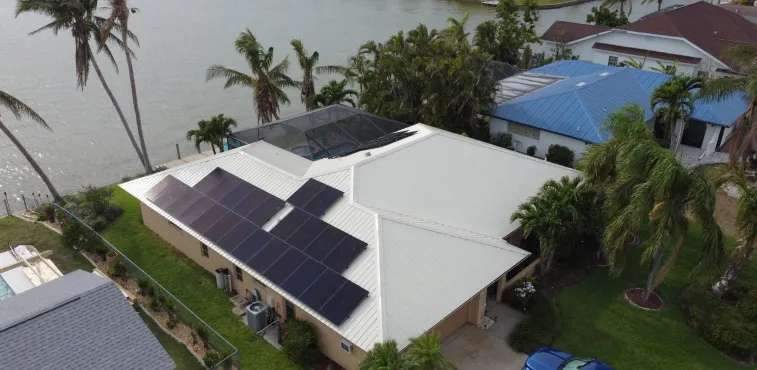Xando Energy

Solar companies, like Xando Energy, take the proper steps to install a solar energy system to make sure it functions correctly. Some of these steps include installing solar panels, inverters, racking or mounting systems, and more. Here is what you can expect from a solar company during a solar energy system installation:
One of the main parts of a solar energy system is the solar panels. A solar company can help you choose the correct size of solar panels for your home. These panels are designed to capture sunlight and convert it into electricity to power homes. Solar panels are typically mounted on your home's roof or a ground-mounted structure. Our team can help you explore different solar panel options and installation locations. This assessment is typically done during your free consultation.
The electricity generated by solar panels is in the form of direct current (DC), but most home appliances run on an alternating current (AC). An inverter's primary function is to convert the DC electricity from your solar panels into AC electricity that you can use to power your home. At Xando Energy, we use two main types of inverters in our solar energy systems: central inverters and microinverters. We connect central inverters to multiple panels in a series. Microinverters are attached to individual panels. Each inverter type has its advantages, and we can help you choose one depending on your specific installation requirements.
Solar companies securely mount solar panels to your roof or the ground. This part of the installation is done using a racking or mounting system. These systems provide structural support to keep the panels in place. The installers make sure the panels are positioned correctly to capture sunlight throughout the day. The type of mounting system used can vary based on factors like your roof's material, slope, and the local climate. Our team will assess your property and select the most appropriate mounting system for your solar panels.
Solar panels and inverters must be connected through a series of electrical wires. Proper wiring impacts whether electricity is generated by your solar panels. Properly installed wiring allows efficient energy flow to your home's electrical system. This wiring is typically installed in a conduit for protection and aesthetics. In addition to connecting the solar panels to the inverter, other electrical components may be installed, such as combiner boxes and disconnect switches. These can increase the safety and functionality of your solar energy system.
A monitoring system is an optional but highly beneficial component of a solar energy system. It allows you to keep track of your system's performance in real time. This information provides insights into how much electricity your panels are generating, how much energy you're consuming, and how much energy you're exporting to the grid. Monitoring systems often come with user-friendly interfaces that can be accessed via a computer or smartphone app. This helps you stay informed of your solar energy production and usage.
A grid-tied system allows you to sell excess electricity back to the utility company's grid and draw power from it when your solar panels aren't producing enough energy. You'll need a bi-directional meter installed by your utility company to connect to the grid. This can measure the electricity you consume and the excess you return to the grid. This meter allows for more accurate billing and compensation for any excess energy you contribute.
At Xando Energy, we can install your new solar energy system and keep you informed of each step in the process. Our team has experience in installing residential solar systems in South Florida to help homeowners save money on their energy bills. During your initial consultation, we can walk you through the installation process and answer any questions you may have. Contact us today to learn more about installing a solar energy system on your property.